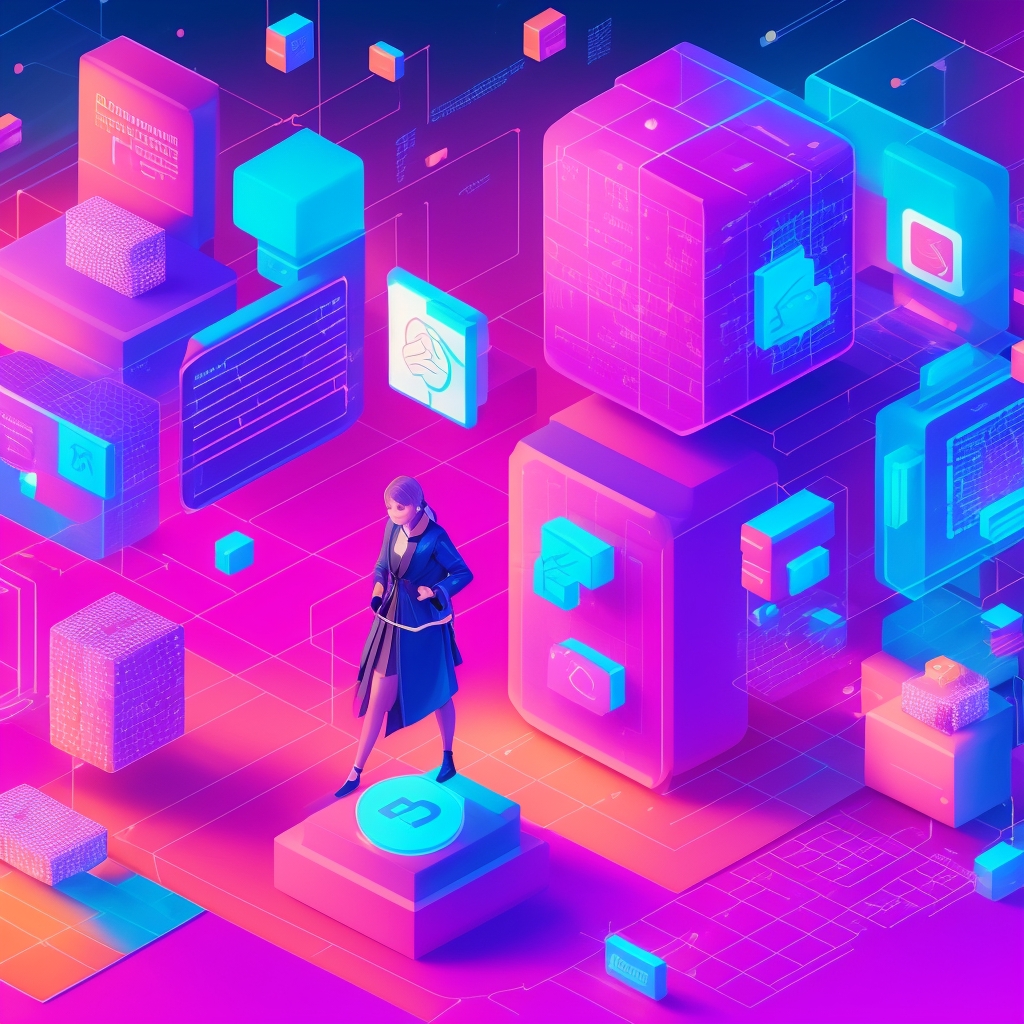Artificial Intelligence (AI) has become a central pillar of contemporary technological innovations, and this trend is only accelerating as 2025 approaches. AI, which encompasses a set of technologies capable of simulating human intellectual processes, is redefining innovation paradigms. But why is AI so crucial for future technological advancements? This article explores the reasons why AI is at the heart of technological innovations in 2025, examining its concrete applications and implications for various sectors.
Experts predict that the global AI market will reach over $243.72 billion in 2025, with some estimates placing it at $294.16 billion in 2025, growing to approximately $1,771.62 billion by 2032 with a CAGR of 29.2% over the 2025-2032 period. Other projections indicate the market could reach $371.71 billion in 2025 and $2,407.02 billion by 2032, underscoring its central role in shaping our technological future. The global AI market is expected to grow by 38% in 2025.
The Drivers of AI in Technological Innovation
Transformation of Industrial Processes
One of the main drivers of AI in technological innovations is its ability to transform industrial processes. Thanks to advanced machine learning and predictive analytics, companies can optimize production, reduce costs, and improve product quality. For example, AI enables predictive maintenance in factories, preventing costly breakdowns before they occur by analyzing sensor data and identifying potential failures with up to 90% accuracy. This transition, often called Industry 4.0, integrates AI with the Industrial Internet of Things (IIoT) to create smarter, more autonomous manufacturing ecosystems.
The AI in manufacturing market is expected to reach $5.82 billion in 2025, growing at a CAGR of 41.5% from 2024, with projections to reach $16 billion by 2025 according to some reports. The emergence of Generative AI is also revolutionizing product design and simulation, accelerating innovation cycles. It’s anticipated that over 60% of new product introductions by 2025 will use generative AI for concept design and creation. This includes leveraging generative AI for:
- Rapid prototyping and design iteration.
- Simulating product performance under various conditions.
- Automating the creation of design variations.
Revolution in the Healthcare Sector
In the healthcare sector, AI plays a crucial role in facilitating early and personalized disease diagnosis. AI algorithms can analyze medical images, such as X-rays and MRIs, with an accuracy that often surpasses human specialists, leading to faster detection of diseases like cancer. Studies show that AI can improve diagnostic accuracy by over 15% in certain conditions. The global AI in healthcare market is estimated to reach $36.96 billion in 2025, with projections to hit approximately $613.81 billion by 2034, exhibiting a robust CAGR of 36.83%. Other estimates place the market at $39.25 billion in 2025, growing to $504.17 billion by 2032.
Furthermore, AI-powered virtual assistants enhance patient care management by offering personalized recommendations, continuous monitoring, and simplified administrative tasks. AI is also at the forefront of drug discovery, significantly reducing the time and costs associated with developing new treatments. In 2024, AI-identified molecules showed Phase 1 clinical trial success rates of 80-90%, significantly higher than historical averages of 40-65%. According to PharmiWeb.com, AI is expected to reduce drug development times by 40% and increase success rates by 20% by 2025. The increasing volume of healthcare data, estimated to grow to over 175 zettabytes by 2025, is a key driver for AI integration, enabling actionable insights for improved outcomes.
Automation and Efficiency
Automating repetitive and time-consuming tasks is another area where AI excels. In the financial sector, for instance, AI is used to automate compliance and verification processes, significantly reducing the risk of human error and accelerating operations. AI also improves the efficiency of logistics operations by:
- Optimizing delivery routes in real time, reducing fuel consumption by up to 20%.
- Managing inventory with predictive demand forecasting, minimizing waste. AI-driven demand forecasting has reduced errors by up to 50% in 2024, and AI-powered inventory management solutions can cut carrying costs by 20-30%.
- Automating warehousing tasks, improving throughput.
According to an Accenture report, AI-powered automation could increase productivity by up to 40% across various industries by 2035. Moreover, AI-optimized logistics can reduce carbon emissions by up to 15%, contributing to more sustainable supply chain practices. The global AI in supply chain market is expected to reach $9.94 billion in 2025 and approximately $192.51 billion by 2034, with a CAGR of 39.00%. Other reports indicate the AI in logistics market will reach $20.8 billion in 2025, representing a staggering 45.6% CAGR from 2020, with 78% of supply chain leaders reporting significant operational improvements after implementing AI-powered solutions. The broader AI in logistics and supply chain management market is projected to reach $5.75 billion in 2025 at a CAGR of 42.6%.
Concrete Examples and Use Cases
AI in the Automotive Industry: Autonomous Driving
The automotive industry is a flagship sector where AI is driving a revolution. Autonomous vehicles, which rely on sophisticated deep learning algorithms and Edge AI, are capable of navigating complex environments without human intervention. These vehicles use a combination of sensors, cameras, Lidar, and GPS data to make real-time decisions, significantly improving road safety and reducing traffic congestion. Major players are targeting Level 4 autonomy (high automation) in specific contexts by 2025, promising a safer and more efficient transportation future. The revenue generated by AI-powered self-driving vehicles is estimated at over $170 billion annually worldwide.
AI and Online Service Personalization
E-commerce and streaming platforms widely use AI to personalize the user experience. For example, recommendation algorithms analyze purchasing behavior or viewing habits to suggest products or content likely to interest the user. This personalization boosts user engagement, increases conversion rates, and fosters brand loyalty. Online retailers using AI for personalization report revenue increases of 5 to 15%. In 2024, 74% of US consumers believe AI improves their shopping experience. Furthermore, AI-powered product recommendations can increase sales by 35% and conversions by 3X. The e-commerce market’s use of AI was valued at $9.01 billion in 2025 and is set to soar past $64.03 billion by 2034, reflecting a strong CAGR of 24.34%.
This hyper-personalization extends to:
- Dynamic pricing strategies adapting to real-time demand and individual willingness to pay.
- AI-powered chatbots providing instant customer support. In 2024, 80% of retail and e-commerce companies either use or plan to use AI chatbots.
- Tailored marketing campaigns for individual user segments, with personalization driving up to a 15% revenue uplift and increasing marketing efficiency by 30% for e-commerce businesses.
- Voice search dominance, with half of online searches expected to be voice-activated by 2025, pushing businesses to adopt conversational AI.
AI Beyond Traditional Sectors: Sustainability and Smart Cities
AI’s impact extends beyond conventional industries, playing a vital role in addressing global challenges:
- Environmental Sustainability: AI optimizes energy grids, monitors deforestation, and predicts climate patterns, aiding in the development of green AI solutions. For instance, Google’s AI has reduced energy consumption in its data centers by up to 40%. Studies estimate that the judicious use of AI could help reduce greenhouse gas emissions by 5 to 10% by 2030. AI-driven personalized product recommendations can also encourage customers to choose eco-friendly options, promoting sustainability in e-commerce.
- Smart Cities: AI analyzes urban data to manage traffic, optimize public services, and enhance citizen safety, leading to more efficient and livable urban environments. This includes predictive policing and intelligent waste management. By 2025, AI-powered predictive analytics will be indispensable for urban planning, enabling cities to forecast traffic congestion, energy demand, and environmental risks. Cities like London are already using predictive models for traffic management.
Key Takeaways and Best Practices
Importance of Quality Data
For AI to be effective, it requires high-quality, clean, and unbiased data. Companies must invest in data collection, curation, and management to ensure the relevance and accuracy of AI results. A robust data governance strategy is essential to maximize AI’s benefits and prevent biased or erroneous outcomes. As Fei-Fei Li, co-director of Stanford’s Institute for Human-Centered AI, emphasizes, “Data is the new oil, and AI is the engine that refines it.” Indeed, “AI is only as good as the data it was trained on.” Poor data quality can lead to inaccurate models, biased results, and missed opportunities, potentially causing legal, ethical, and financial challenges. As data science expert Piyanka Jain notes, “You can have all of the fancy tools, but if [your] data quality is not good, you’re nowhere.”. The caliber of data significantly influences AI’s performance, shaping its decisions and outcomes.
Ethical Integration of AI
As AI becomes ubiquitous, it is crucial to adopt an ethical and responsible approach to its development and deployment. Concerns regarding privacy, transparency, fairness, and discrimination must be addressed to ensure AI benefits all of society. According to Ursula von der Leyen, President of the European Commission, “AI is a very significant opportunity – if it is used responsibly.”
Key considerations include:
- Algorithmic transparency: Understanding how AI models make decisions.
- Bias detection and mitigation: Ensuring AI systems do not perpetuate societal biases.
- Data privacy: Adhering to regulations like GDPR and CCPA. Companies must actively engage in ethical practices, develop clear AI guidelines, and adhere to relevant regulations like the impending EU AI Act, which aims to regulate high-risk AI systems. The first provisions of the EU AI Act became mandatory in February 2025, focusing on prohibiting certain AI systems deemed to pose “unacceptable risks” and requiring adequate AI literacy among employees. Further governance rules and obligations for General-Purpose AI (GPAI) models will come into force by August 2, 2025. This commitment to “Responsible AI” builds trust and ensures sustainable innovation.
FAQ
1. What is the difference between AI and machine learning?
AI is a broader field that encompasses machine learning. Machine learning is a specific approach within AI that uses algorithms to learn from data and make decisions or predictions without being explicitly programmed for each task. Think of AI as the brain, and machine learning as one of the primary ways it learns. Other sub-domains of AI include deep learning, natural language processing (NLP), and computer vision.
2. How can AI improve cybersecurity?
AI can analyze vast volumes of data in real time to detect anomalies that indicate cyber threats, such as unusual network traffic or suspicious login attempts, often identifying threats up to 10 times faster than human analysts. It can also automate real-time responses to intrusions, significantly improving the speed and effectiveness of defenses against sophisticated attacks. AI is crucial for zero-day threat detection and is increasingly used for predictive threat intelligence and vulnerability management.
3. Will AI replace human jobs?
While AI will automate some routine and repetitive tasks, particularly in areas like data entry, it will also create new job opportunities and fundamentally alter existing roles. Human skills like creativity, critical thinking, emotional intelligence, and empathy will remain essential. The World Economic Forum predicted in 2020 that AI would create 97 million new jobs by 2025. However, a 2025 World Economic Forum report indicates that 40% of programming tasks could be automated by 2040. It is crucial for the workforce to acquire the new skills needed in an increasingly AI-driven world through reskilling and upskilling initiatives. A 2025 PwC survey found that industries more exposed to AI had 3 times higher revenue growth per employee.
4. What are the technical challenges of AI?
Technical challenges include the need for large amounts of high-quality, labeled data, the immense computational power required to train and deploy complex algorithms (especially deep learning models), and the inherent complexity of AI models that can sometimes be “black boxes,” making their decisions difficult to interpret. Furthermore, biases embedded in training data can lead to unfair or inaccurate results, requiring significant effort in bias mitigation and explainable AI (XAI). The lack of quality data is a notable challenge for the generative AI market.
5. Where can I learn more about AI?
To deepen your knowledge of AI, resources such as Coursera, edX, and university open courses (e.g., Stanford, MIT) offer online programs on various aspects of AI, from machine learning fundamentals to AI ethics, natural language processing, and specialized applications. Industry reports from Gartner, Forrester, and PwC also provide valuable insights into market trends and future projections for 2025 and beyond. Additionally, following leading AI research institutions and tech companies (like Google AI, OpenAI, DeepMind) can provide insights into cutting-edge developments.
6. How does Generative AI influence technological innovation?
Generative AI, a subset of AI capable of creating new content (text, images, code, video), is rapidly accelerating innovation. In 2025, it is expected to revolutionize:
- Content creation: Automating the writing of articles, marketing copy, and design concepts.
- Software development: Generating code, facilitating rapid prototyping, and debugging.
- Drug discovery: Designing new molecular structures and accelerating research. This technology significantly boosts creativity and efficiency across industries. The adoption of generative AI has soared, with 71% of organizations using it in 2024, up from 33% in 2023. In the US, 95% of companies are using generative AI as of May 2025, with production use cases doubling between October 2023 and December 2024. The generative AI market is expected to reach $37.89 billion in 2025, with some projections as high as $62.72 billion or even $90.90 billion in 2025, and is forecasted to reach $1,005.07 billion by 2034. Its rapid adoption has surpassed that of PCs and the internet in their early stages.
Conclusion
Artificial intelligence is undeniably the driving force behind many technological innovations transforming our world. It optimizes industrial processes, revolutionizes healthcare, personalizes online services, and addresses critical societal challenges, among other advancements. As we head into 2025, AI will continue to reshape industries and improve our quality of life profoundly, fueled by advancements in Generative AI and Edge AI. Its pervasive influence is evident across sectors, from manufacturing to e-commerce, driven by significant market growth and increasing adoption rates.
However, its adoption requires careful attention to ethics, robust data governance, and continuous learning to ensure a prosperous, equitable, and inclusive future for all. Embracing AI responsibly is key to unlocking its full potential as the ultimate catalyst for innovation. The ongoing evolution of regulatory frameworks like the EU AI Act highlights the global commitment to guiding AI’s development in a safe and beneficial direction.







